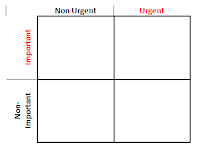I talk to small businesses everyday about social media.
They email me questions, ask for presentations, tutoring, help with setting up accounts, etc. The nuts and bolts can take a lot of time for small business, the services are always changing, and even once all the accounts are set up and integrated, they find themselves spending more and more time updating statuses and tweeting links with less and less satisfaction and results.
That’s one of the reasons I’m a big fan of strategy. Know what results you are expecting.
Know where you want to go. Sure, save all the usernames you can. That’s good advice. But you don’t have to populate them right now, or ever. Keep it simple. Blog only if you have time and your customers will value it. Tweet, definitely. Facebook page, absolutely. Maybe even add a coupon to Google places or foursquare if retail savings is your business forte. Make time to engage in key groups on Linked in if you’re a consultant.
Just keep it manageable.
Social media for small business needs to start somewhere, and starting small and making time to monitor results will help you judge your ROI. Here’s a 10-Step checklist for small business. If you’re a one or two person shop, realize that unless your business gets put on hold, putting these 10 steps into action can take 3-5 weeks. Because sometimes, well actually, all the time social media is less important than getting the work done, or going for coffee with a prospect, or sending a thank you note.
So if you’re ready to get started, here’s some suggestions. And if you need help, or want a strategy, give me a call or send me an email.
1. Ensure Google analytic tracking code is properly installed and functioning on web pages
2. Update locations and request reviews and recommendations on Google, Yelp etc.
3. Establish your foursquare account and offer a discount for anyone who checks in
4. Make your Facebook Page public with a username
5. Create your LinkedIn business page
6. Establish Twitter and Blog accounts
7. Write and post first content Blog then Integrate/Cross promote it by tweeting about it, posting on facebook
8. Add your new account addresses to your profile pages, emails, business cards, website
9. Update content on profile accounts, like your Chamber of Commerce and other site
10. Practise listening, creating and engaging strategies; monitor results!
If it was an 11 step checklist, #11 would be ... have fun! It’s called social for a reason.


